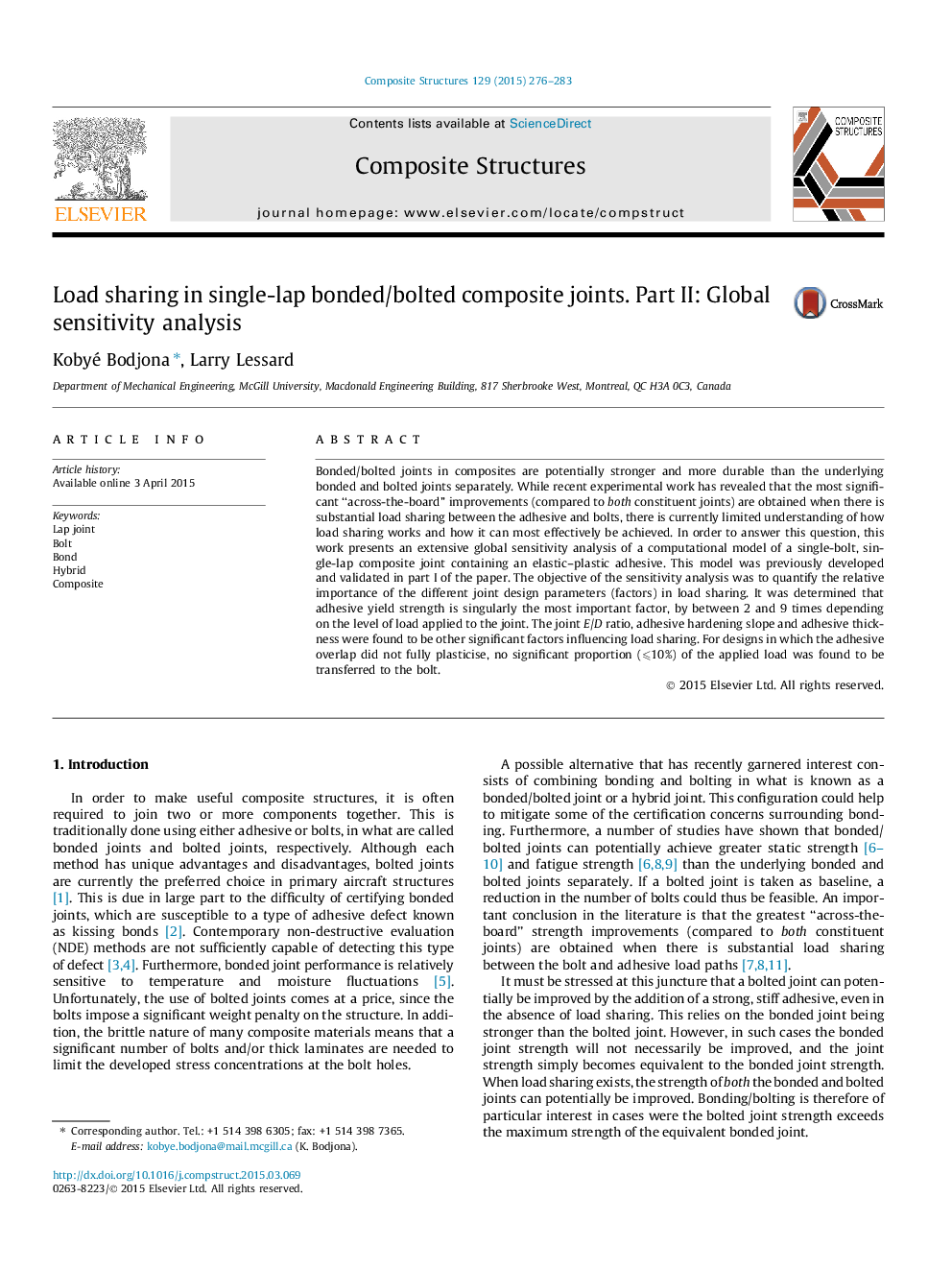| Article ID | Journal | Published Year | Pages | File Type |
|---|---|---|---|---|
| 6706741 | Composite Structures | 2015 | 8 Pages |
Abstract
Bonded/bolted joints in composites are potentially stronger and more durable than the underlying bonded and bolted joints separately. While recent experimental work has revealed that the most significant “across-the-board” improvements (compared to both constituent joints) are obtained when there is substantial load sharing between the adhesive and bolts, there is currently limited understanding of how load sharing works and how it can most effectively be achieved. In order to answer this question, this work presents an extensive global sensitivity analysis of a computational model of a single-bolt, single-lap composite joint containing an elastic-plastic adhesive. This model was previously developed and validated in part I of the paper. The objective of the sensitivity analysis was to quantify the relative importance of the different joint design parameters (factors) in load sharing. It was determined that adhesive yield strength is singularly the most important factor, by between 2 and 9 times depending on the level of load applied to the joint. The joint E/D ratio, adhesive hardening slope and adhesive thickness were found to be other significant factors influencing load sharing. For designs in which the adhesive overlap did not fully plasticise, no significant proportion (⩽10%) of the applied load was found to be transferred to the bolt.
Related Topics
Physical Sciences and Engineering
Engineering
Civil and Structural Engineering
Authors
Kobyé Bodjona, Larry Lessard,
